Puno and Lake Titicaca DIY
Puno is a city rather disappointing and insignificant. The Bolivian side of Titicaca is much better, so I suggest to privilege it, and then cross the border and stop just long enough to see Sillustani and floating islands.
The city structure is very similar to La Paz, a downhill cascade of raw brick-colored buildings on the banks of the lake, light years away from the bucolic atmosphere of Copacabana and Isla del Sol.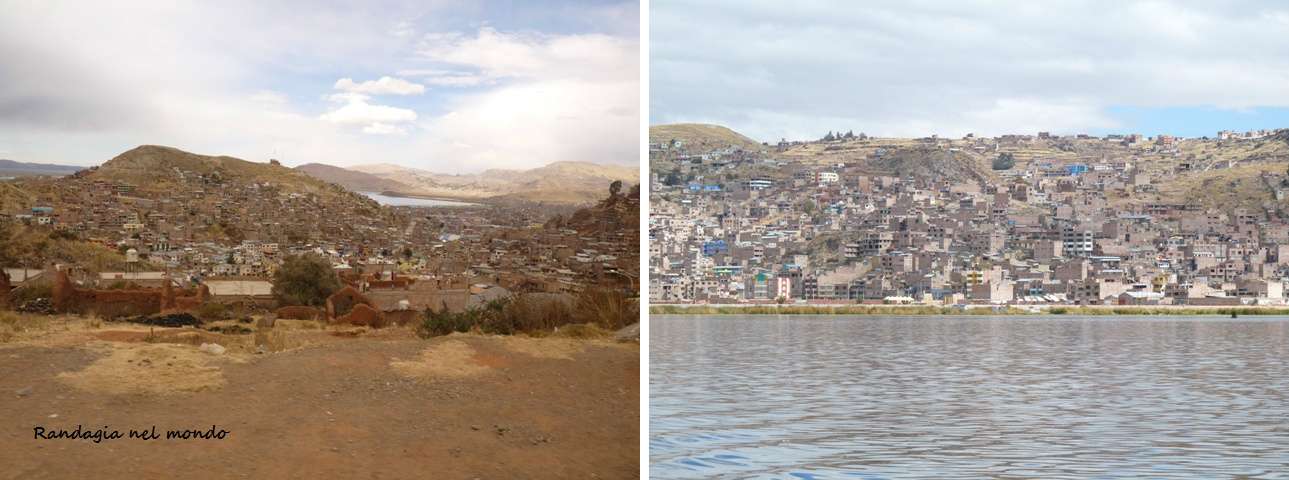
I arrive in Puno coming from Copacabana, Bolivia. I leave at 9.00 with the Titicaca Tours bus (30 BOB). The passage at the border flows smoothly, no problem, just pay attention to the license plate and get on the right bus. I’m sitting next to a Spaniard who often hangs out around here, he entertains me with a lecture about the damages caused by colonialism perpetrated by his countrymen in the post Colombian era. 9 million victims among Mexico, Peru and Bolivia, 6 million in the latter, a holocaust on which no one has ever thought of producing a movie, maybe too much time has been spent?
Once at the bus terminal, with 5 PEN in taxi I reach the Plaza de Armas. I comb in vain the centre looking for a cheap pension. In the pedestrian street full of agencies, shops and restaurants I visit a hostel that wants 20 PEN for an awful room. Everywhere else, hotels have USD prices, and hot water thermos with coca leaves. The Tourist Office directs me in Calle Cajamarca, where I finally find the Tumi Inn II, 30 PEN. The rooms are simple, but at least not cold, the hot water takes a lifetime to arrive but for 30 PEN I do not expect same service as the Hilton .. I just place my luggage and immediately run in the street, it is 13.00, I have to eat and find someone to take me to Sillustani, not reachable with public transport. All travel agencies propose the same tour, same price, 35 PEN, the same starting time, 14.00. I choose at random.
The weather is not great, cold wind and Icelandic grey clouds
As soon as we arrive in Sillustani, it starts to rain. I’m wearing my down jacket and a fisherman plastic poncho above it. Very cold. The site itself is very attractive, overlooking Lake Umayo. I saw beautiful shots on TV, cirrus candid reflections on choppy waters, unfortunately today it is completely colourless.
It is a pre-Inca burial place, the tombs, shaped like a tower, some incomplete, some plundered, preserve the remains of the local Qolla (an Aymara population) élite..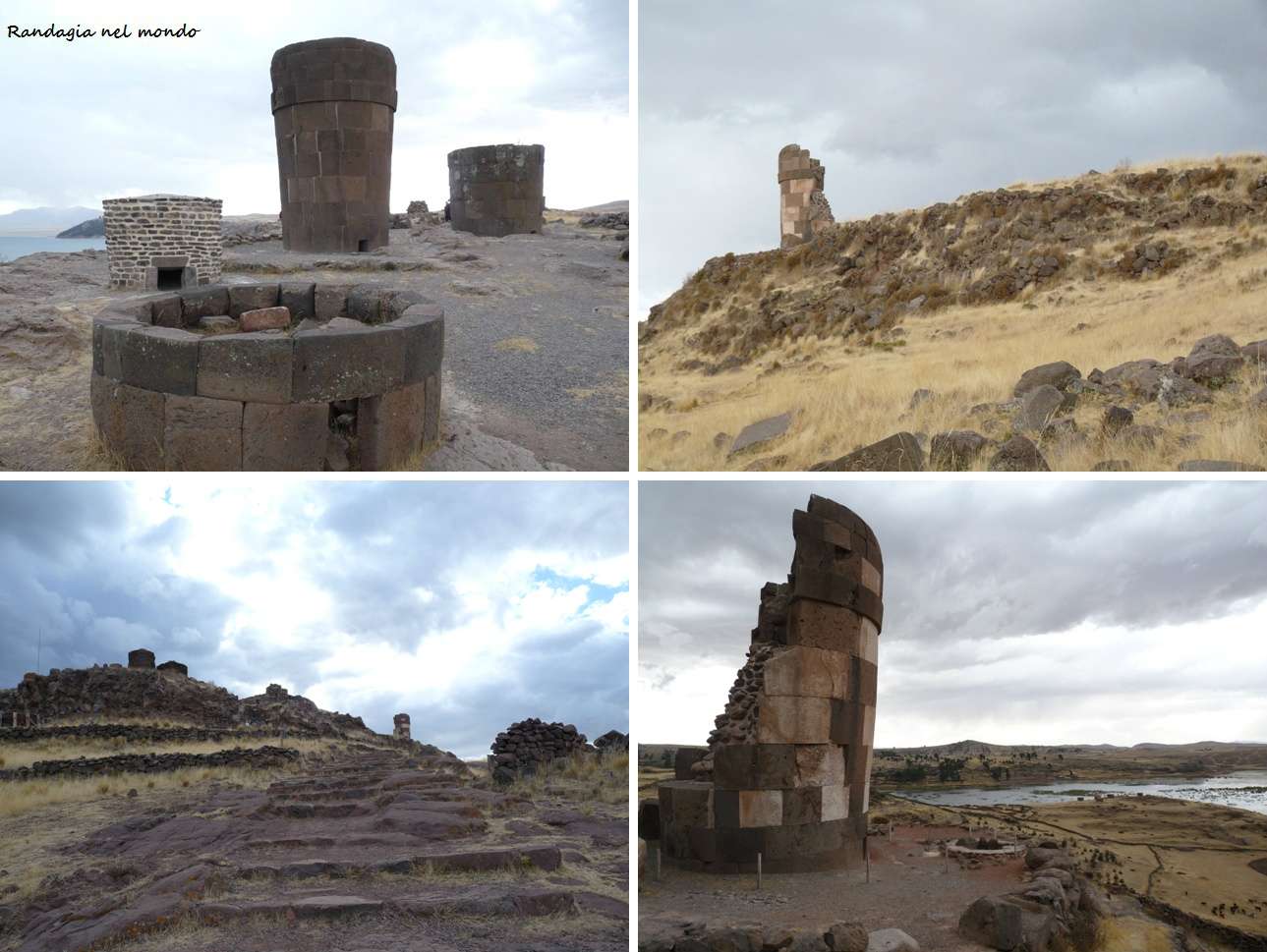
Coming back we stop at a family that shows us daily uses and customs, and in exchange sells some artefacts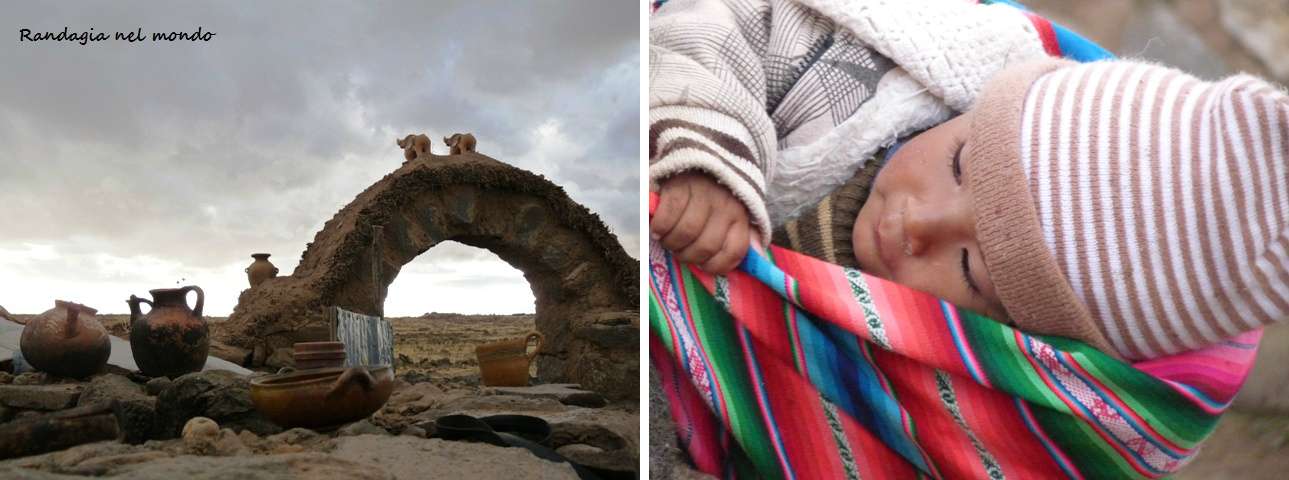
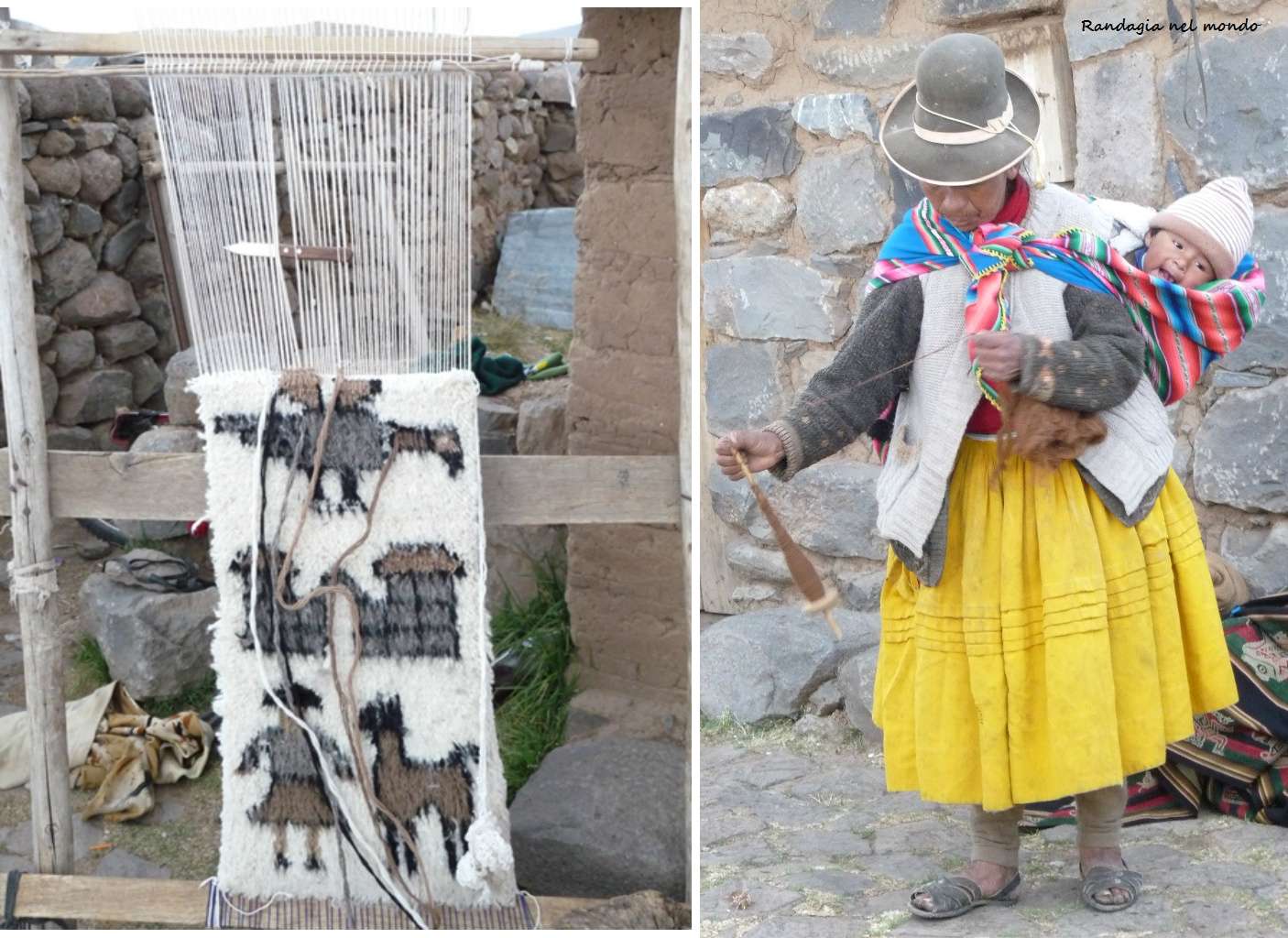
A microcosm fenced by a low wall, local camelids graze tied to a brick. The guanaco is very delightful, and extremely soft. Its wool is the most prized and expensive of those produced in the Andes. The texture is similar to the best cashmere, the price as well. It seemed to me that they were very difficult to tame, however this one is meek, and does not spit either! 🙂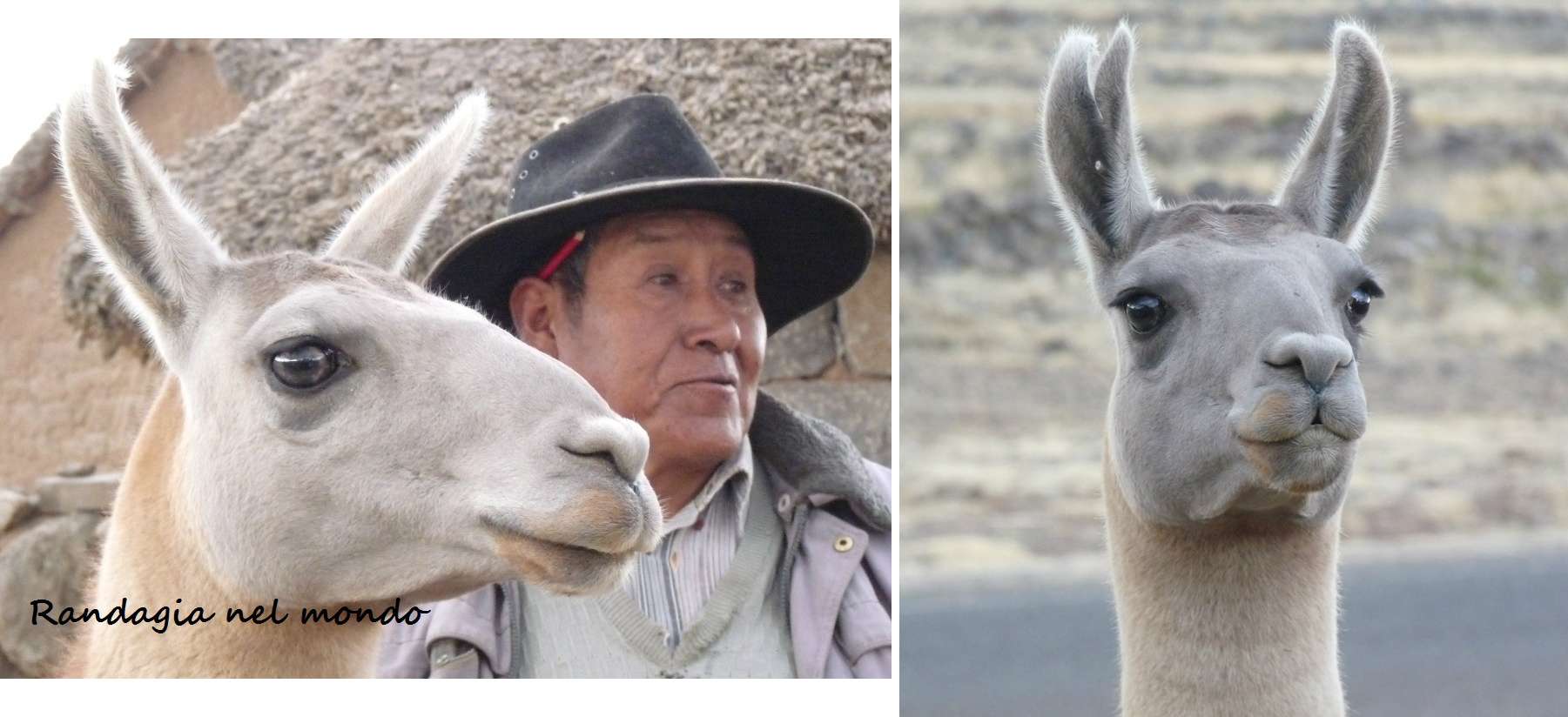
Other animals are kept inside cages, guinea pigs (cuy). Peruvians use to eat them, and I read somewhere that their guts are scrutinized by soothsayers to predict the future..
I have dinner at Restaurante Hacienda, tourist menu among the least expensive, 18 PEN, cheered by a small orchestra which plays typical songs.
The Cathedral is closed and I can not visit it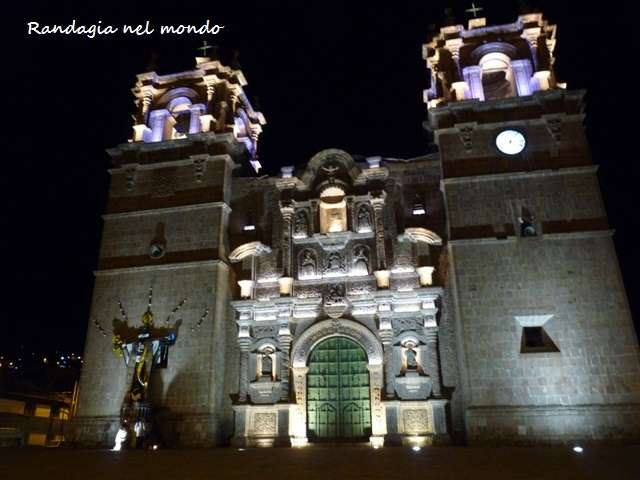
The next day, I visit the floating islands. It is absolutely not necessary to book with an agency. Just take one of the central streets and arrive at the port. Gloomy day today, after the blinding sunshine of Bolivia, everything here seems strange, monochord. Peruvians of this area make fun of the Bolivian, because they are poor and less organized. They criticize a lot, but then they go for shopping to Copacabana to save money. Apart from this, since I came here the weather sucks, while I had 2 weeks of sunshine in Bolivia, here the banks of the lake are dirty and muddy, while in Bolivia they were clean, and landscape was much better ..
The ferry to Uros Chulluni costs 10 PEN, plus another 8 at landing, as a tax. The sky clears a bit, the lake is crossed by boats, children going to school, and then people in their daily tasks. There are also curious boats similar to gondolas, built with totora, also used for houses and paving.
These communities are able to maintain their traditions only thanks to tourism, the only alternative to disassemble everything and move to Puno. Walking on these bands of reeds produces a curious crunch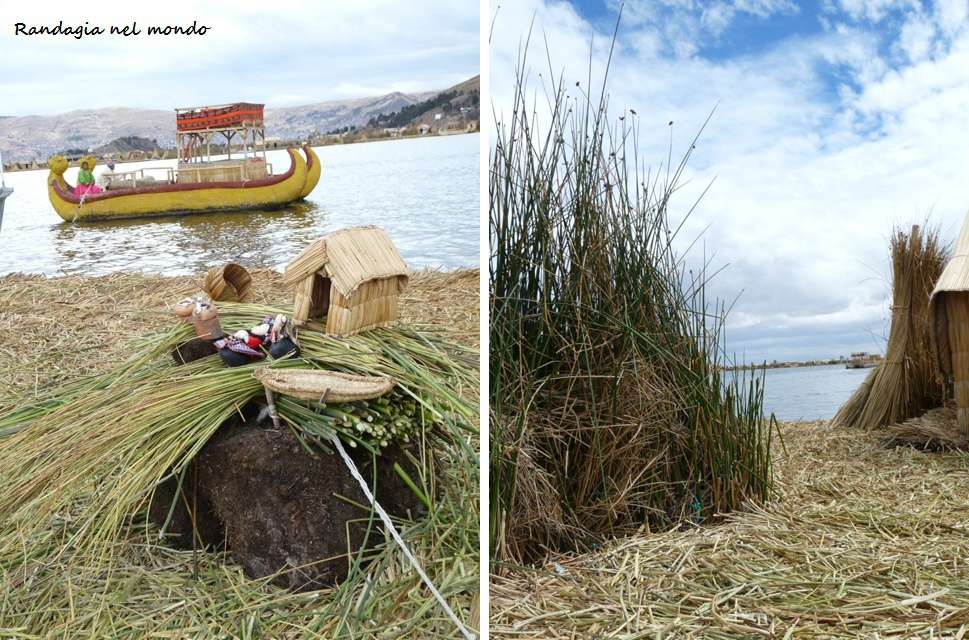
Local people sell products, I feel compelled to buy something without even bargaining just to allow them to resist to modernity, handing down their customs, live in the way they want, I think it’s their right. In the name of civilization and progress everything is being destroyed. The atmosphere is serene, smiling faces, white teeth, red cheeks due to the cold temperature, bright costumes, bright colors. The children seem well-kept, I’m happy to give my contribution, I accept even a ride in a gondola, 7 PEN, which ferries me on another island, larger and more crowded, where a bar has been built.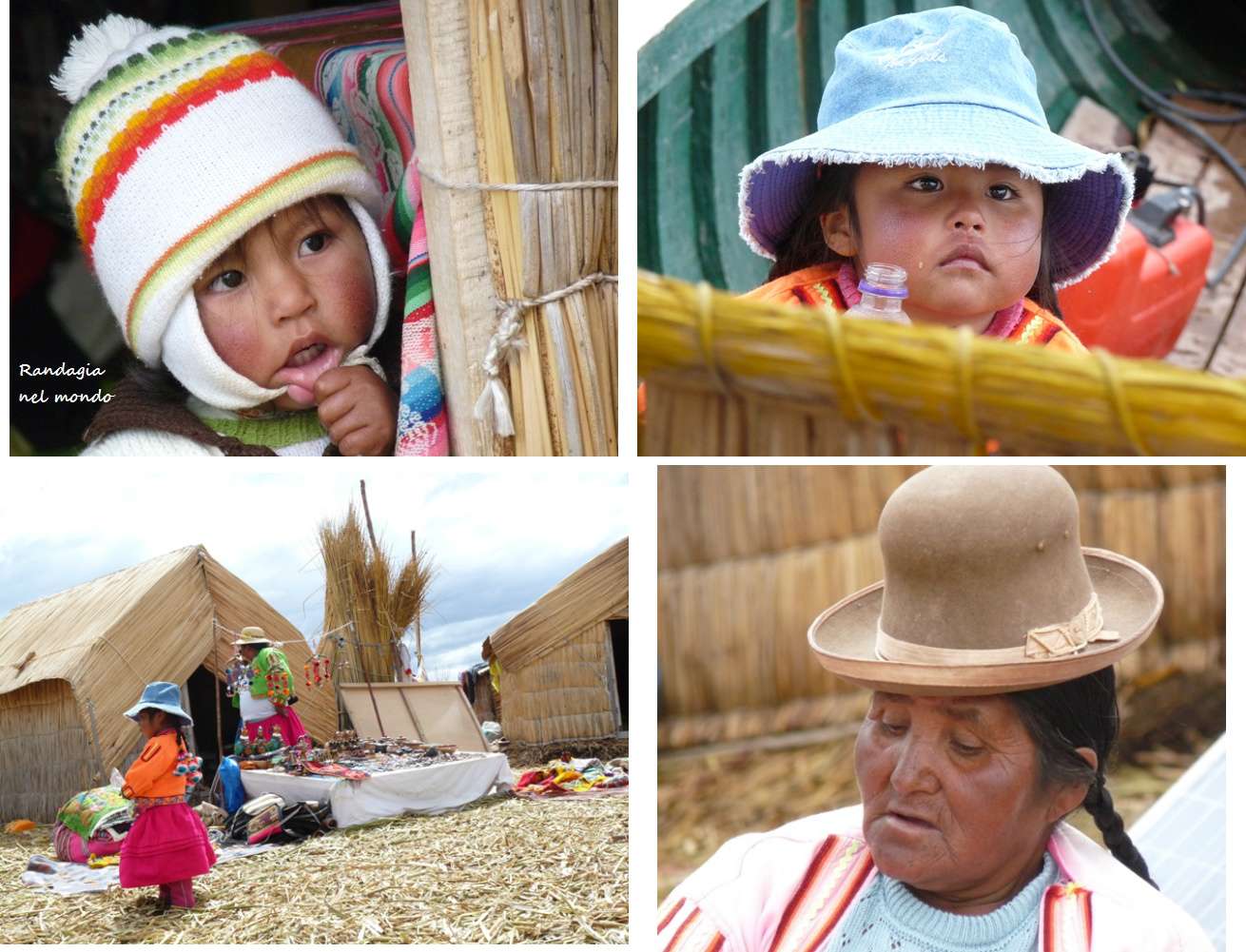
At lunch time I am back on the mainland, and allow myself the least expensive Peruvian almuerzo, 3.5 PEN, rice soup, mashed potatoes, meat sauce and white rice, in a kind of very simple comedor, the Restaurante Los Salarios on Avenida Titicaca. Some people are celebrating a wedding, only close relatives and spouses, they look poor, yet they wear elegant jackets and ties which clash a bit with the environment. I would be curious to talk to them, but they do not speak Spanish ..
I buy then a Movistar sim card to speak at home with Lorenzo, and then I spend 3 PEN for a tea in an elegant downtown bar, almost the same price of lunch …
Two words on Tumi Inn II : so nice was the lady who greeted us on arrival yesterday, so obnoxious is the guy who instead is on duty today
This morning at breakfast he wanted to serve me the leftovers of another guest, and at the time to leave he pretends money for the luggage storage, at my refusal he tells me he won’t call any taxi for me, since this is not his job.
No problem to find a taxi in the street, and reach the terminal. The Julsa bus (40 PEN for a cama, ticket bought yesterday at the counter) to Arequipa leaves on time at 18, and arrives 15 hours late, but that’s another story, see here….
